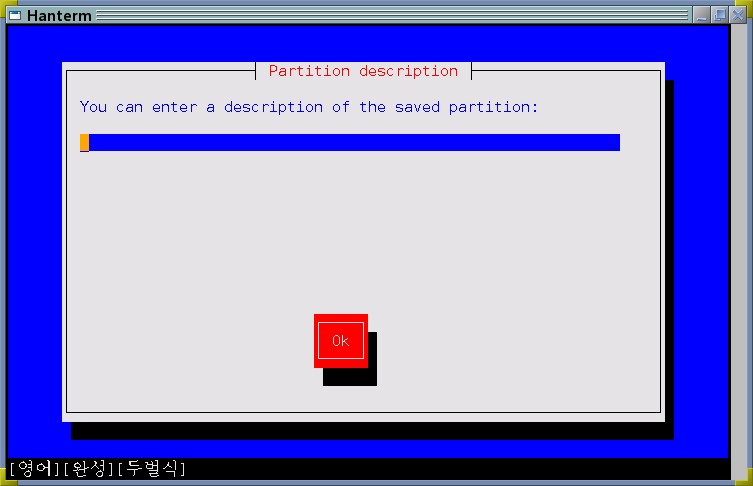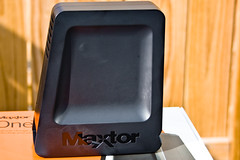
Developing a warm, responsive, reciprocal relationship between children and caregivers is considered as a goal in and of itself, and is deemed important to emotional development of children. An important aspect of studying the relationship between children and their caregivers is the attachment security of children. Various studies were conducted on many sample groups of child-mother dyads to address many questions regarding attachment theories. Some studies take longitudinal approach to find the relation of early child attachment to emotionally congruent dialog (Oppenheim, Koren-Karie, & Sagi-Schwartz, 2007) or child social behavior (Burgess, Marshall, Rubin, & Fox, 2003). Other studies take concurrent approach to study attachment security and temperament of children in different groups such as divorced families and intact families (Nair and Murray, 2005). Some researchers like Berlin and Cassidy (2001) research the adult attachment theory and suggest its implications in psychotherapeutic applications dealing with family relationship problems. These studies are briefly reviewed and analyzed as follows.
A longitudinal study was conducted to examine the relations between attachment of infants at 12 months and their capacity to engage in dialogs discussing various emotional themes with their mother at age 4.5 and 7.5 (Oppenheim, Koren-Karie, & Sagi-Schwartz, 2007). In this study, two tests were given to a diverse sample group of mother-child dyads consisting of securely attached children, insecure-ambivalent children, and insecure-disorganized children. One of the two tests was Autobiographical Emotional Event Dialog (AEED) test in which each mother-child dyad talked about past events evoking four feelings: happiness, sadness, anger and fear. The other test given to the sample group was Separation-Reunion Narrative Co-Construction (SRNCC) test in which each dyad talked about the child’s past emotional experience involving separation and reunion with the parents.
Statistical analyses of the study found attachment in infancy to be a significant predictor of emotionally congruent dialogs (Oppenheim, Koren-Karie, & Sagi-Schwartz, 2007). Children securely attached at infancy would, consistently throughout childhood, display the capability to coherently construct stable, emotional dialogs and also conclude dialogs involving negative emotions in a positive way. The study also showed that securely attached children scored higher in vocabulary tests than insecurely attached children and delivered fluent and balanced conversation.
This study (Oppenheim, et al, 2007) suggests that securely attached children who were consistently given prompt and appropriate responses to their needs from their caregiver in infancy will freely explore their emotional world, knowing and trusting their caregiver as their secure base. In contrast, insecurely attached children often have difficulty expressing their emotions and resolving their negative emotions.
Another longitudinal study was conducted to find relations among child attachment at 14 months, behavioral inhibition at 24 months, and social behaviors with unfamiliar peers at the age of 4 years (Burgess, Marshall, Rubin, & Fox, 2003). Behavioral inhibition was observed and measured by bringing a child to an unfamiliar playroom, and then having the child encounter new toys, a stranger, an inflated tunnel (through which the child was encouraged to crawl), and a clown in that sequence.
Children with insecure-avoidant attachment tend to have uninhibited behavior (Burgess, et al, 2003). Behaviorally uninhibited children show little fear of novelty and readily approach unfamiliar peers. They are likely to grow up to become extrovert, outgoing and sociable when their temperament is balanced. However, when their temperament is left dysregulated, uninhibited children with avoidant attachment in infancy tend to show frustration, anger or even aggression toward situations beyond their control.
Statistical analyses (ANOVA) of Colorado Child Temperament Inventory test and Child Behavior Checklists given to parents of the study sample revealed that avoidant children had higher aggression scores, and that low-inhibition children had higher activity and lower withdrawal scores (Burgess, Marshall, Rubin, & Fox, 2003).
In contrast, children with secure or ambivalent attachment tend to have inhibited behavior in the face of novelty (Burgess, et al, 2003). In a novel situation, behaviorally inhibited children display more reticent behaviors among unfamiliar peers.
On the other hand, Nair and Murray (2005) found that authoritative parenting style made significant contribution to attachment security in preschool children. Authoritative parenting style may be analogous to warm, responsive, and cooperative parenting style that nurtures security in children.
Nair and Murray (2005) recruited 58 dyads of children and mothers from preschools to survey the difference between intact families and divorced families in attachment security of children. Although children in divorced families had lower attachment security scores than those in intact families, divorce is not found to be a cause of insecurity in children, but it is rather stress, depression, spousal conflict, and lack of social support after the divorce that may result in less optimal parenting style toward children, thus resulting in attachment insecurity in children.
The study (Nair & Murray, 2005) also found that children in divorced families had difficult temperament, compared to counterparts in intact families. Children with difficult temperament tend to have irregular eating and sleeping routines, withdraw from new experiences, adapt slowly to changes, and have intense reactions of a negative nature.
Understanding parents’ internal working model of attachment is also considered critical in enhancing early parent-child relationships (Berlin & Cassidy, 2001). Internal working model refers to an individual's expectation of how others are trustworthy and supportive of one's needs, and how one is worthy of kind treatment and likely to receive care when needed. According to Bowlby’s theory of attachment, a parent’s internal working model of attachment plays a critical role in socioemotional development of children.
The primary measure of internal working model of attachment is measured by the Adult Attachment Interview (AAI) in which the interviewee is asked to tell early childhood experiences and their impact on current relationships. Adult attachment has been found to have direct link with attachment security of children. It has been hypothesized that adult attachment would influence parenting behavior, consequently shaping child attachment toward parents and child behaviors (Berlin & Cassidy, 2001).
As children grow up, meet new people and explore new environment, they have emotional needs to turn to their parents in times of distress and uncertainty. When children’s needs for security and comfort are met, parents become both a safe haven (to which children return for comfort in times of distress) and a secure base (from which children set out to explore new world) for children. In this reciprocal relationship between parents and children, adult attachment influences and shapes attachment security and behaviors of children (Berlin & Cassidy, 2001).
Adult attachments are theoretically classified into 4 attachment styles: secure adult attachment, insecure/dismissing adult attachment, insecure/preoccupied adult attachment, and insecure/unresolved adult attachment. This adult attachment theory has provided new ways for psychotherapists to analyze and address parent-child relationship issues (Berlin & Cassidy, 2001).
Securely attached parents value close relationships with their children. They acknowledge a child's needs and consistently meet the needs of children to seek comfort and closeness. They encourage children to explore new environment.
Insecure/dismissing parents avoid or minimize attachment from children and often reject children's needs to seek empathy, comfort and closeness. They overly encourage their children's exploration, competence, and independence. They may also be strict disciplinarian. Children with dismissing parents tend to become overwhelmed by their parent's demand for strength and independence. They may display avoidant behaviors. They may feel emotionally insecure and show aggression toward peers.
In contrast, insecure/preoccupied parents want to maximize attachment from their children in order to fill the void left by past relationships. Preoccupied parents treat their children as immature, demanding and dependent. They often maintain restless, tense and emotional interaction with their children. Their interactions with children encourage children's dependency and discourage children's autonomy and independent exploration.
On the other hand, insecure/unresolved parents show helplessness toward their children and assume weak parental role. They typically have past experience of a loss or trauma. They often show frightened or frightening behavior, instilling fear into their children. Unresolved parents may have role reversal with their children, letting the children take care of parents. Children of unresolved parents may be demanding and controlling.
In summary, the studies of attachment relationship between children and parents have revealed that parent-child relationship is a reciprocal one whereby interaction between children and parents enriches and nourishes psychological well-being of each other. A caregiver’s prompt and sensitive care strengthens children’s sense of security and enables children to explore both emotional world and social environment in a more positive and healthy way. In developing parent-child relationship, it is also important to understand parents’ state of adult attachment since adult attachment affects the parenting style. In addition, divorce has been found to have an indirect effect on child insecurity. However, genuine parental affection and authoritative parenting style have been found to strengthen attachment security of children and nurture child emotional development.
I am fond of children and would like to form a family and have my own children some day. Studying child attachment has broadened my understanding of child psychology and taught me the desirable ways to nurture children emotionally. I gained better insight into my attachment toward my parents and also my state of adult attachment. It is hard to classify my own attachment, but I will try to actively engage in frequent emotional conversations and interactions to improve my current and future relationships, knowing that attachment is influenced by parenting style and reciprocal interaction.
References:







 I need a huge storage device to store all my software and digital media. I shopped around for a USB hard drive. At CostCo, I found Maxtor OneTouch 750GB external hard drive for $99.99 which I think is a great deal. However, I found a bunch of bad reviews for this product. It seems that a lot of buyers found this product broken after using it for some time. Sorry, but it happens.
I need a huge storage device to store all my software and digital media. I shopped around for a USB hard drive. At CostCo, I found Maxtor OneTouch 750GB external hard drive for $99.99 which I think is a great deal. However, I found a bunch of bad reviews for this product. It seems that a lot of buyers found this product broken after using it for some time. Sorry, but it happens.












